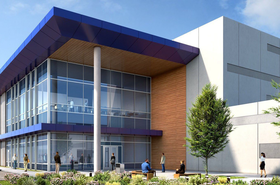Capital costs required for a new data center build are rising sharply. Tier III data center equipment costs rose by $1-2 million per MW last year.
Construction costs for data centers increased by 15 percent last year, with that trend expected to continue. Two-thirds of enterprise and colocation operators expect costs to continue to rise. Across the board, it’s becoming more and more expensive to build a data center.
These costs are climbing for several reasons. First, huge demand combined with lack of available space is driving up land costs, especially in places like Northern Virginia and Silicon Valley. Second, energy costs are high in many areas of the country.
Third, inflation is at a decades-high rate, making capital more expensive to raise. Fourth, a tight labor market is pushing labor costs up. Fifth, supply chain shortages have increased the prices of many materials and equipment.
Sixth, stringent sustainability requirements mean only higher-cost, highly-efficient designs can move forward. A confluence of forces means that solutions for controlling costs are not easily acquired or created.
The realm of real estate
Increasing costs for new data center builds is putting pressure on construction project management to ensure the project is being managed effectively.
In other words, with such an unusually large investment, data center leaders want to ensure their investment is as safe as possible and any unexpected or unnecessary expenditures can be reduced or eliminated.
One way of mitigating risk and maximizing peace of mind through the process is by guaranteeing that not only are design and construction variables tightly managed, but more importantly, the real estate aspects of the project are being handled properly and professionally.
How can a data center ensure that the real estate aspects of a construction project are optimal? Managing these elements of a given data center build can come in several forms.
To start, data centers should have established relationships with business partners that can give them an edge, such as land use attorneys, architects, contractors, designers , community associations, utility companies, local governments, and more. Strong, long standing connections in these areas can make complicated processes smoother, and accelerate the development process.
Next, data centers should have access to as much valuable information as they can to lean on through the process, like listings, tools, data, and other resources – even when not available to the general public.
This kind of intelligence can influence decision making, as it provides important context for discussions around things like site selection, competitive analysis, market trends, environmental impact, and even population demographics.
Finally, data center leaders facing a new build should have confidence that the technical aspects of their planning and negotiations are being handled in a way that creates the most favorable terms possible, which often requires special knowledge of particular aspects related to real estate like proffers, contracts, permits, local ordinances, and zoning.
Responding to parameters such as regulatory laws and building codes can be complex and compliance is paramount, so eliminating potential challenges and delays in these areas can be a huge help to the project.
Investing in a data center is more expensive and complex than ever in the face of rising costs. Data centers should be doing all they can to protect their future asset by ensuring the real estate facets of their project are being handled in a way that mitigates risk and guarantees a safe investment.
More from PowerHouse Data Centers
-

PowerHouse seeks to build data center campus in Charlotte, North Carolina
AREP-owned company's first project outside Virginia
-

Sponsored It takes a village
Data center construction isn’t just about erecting buildings, it’s about building trust
-

Sponsored The top 7 ways to pinpoint and build your perfect data center location
And why choosing the right data center developer is key

